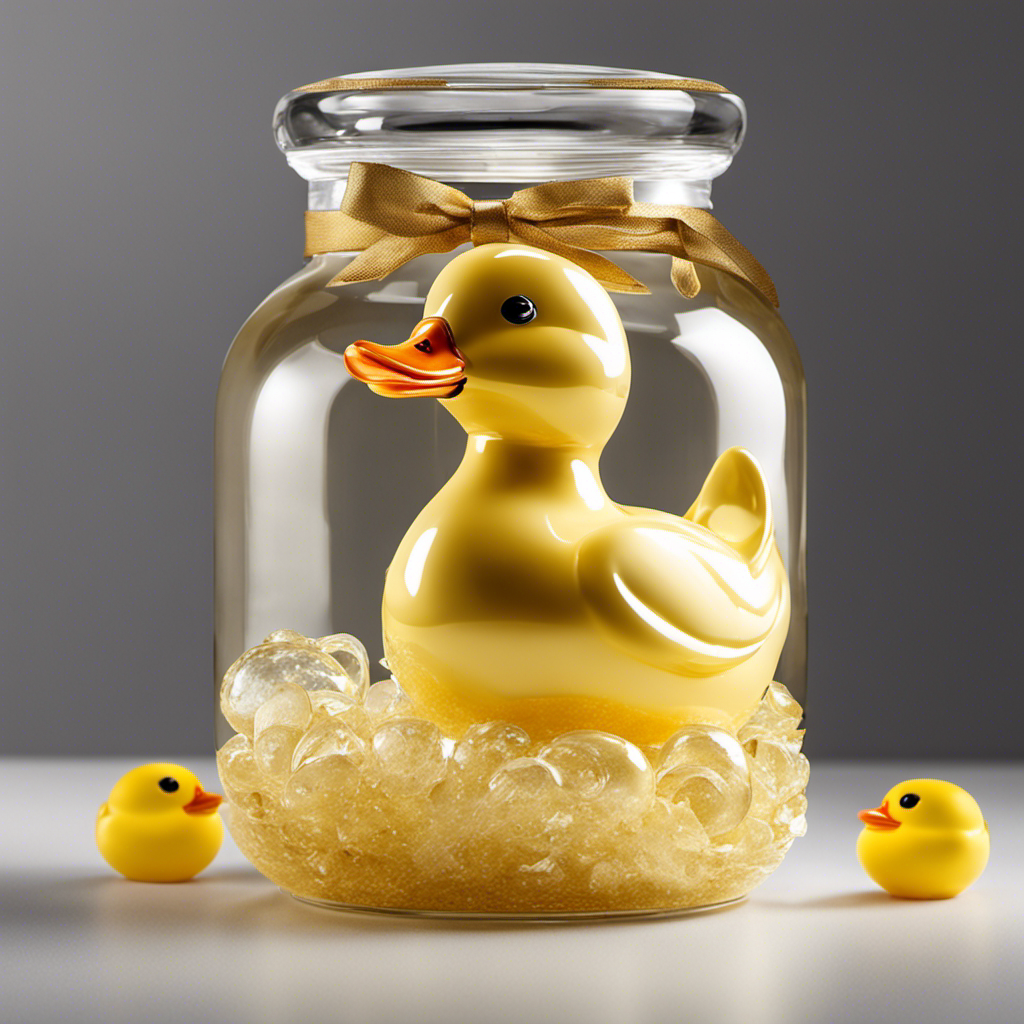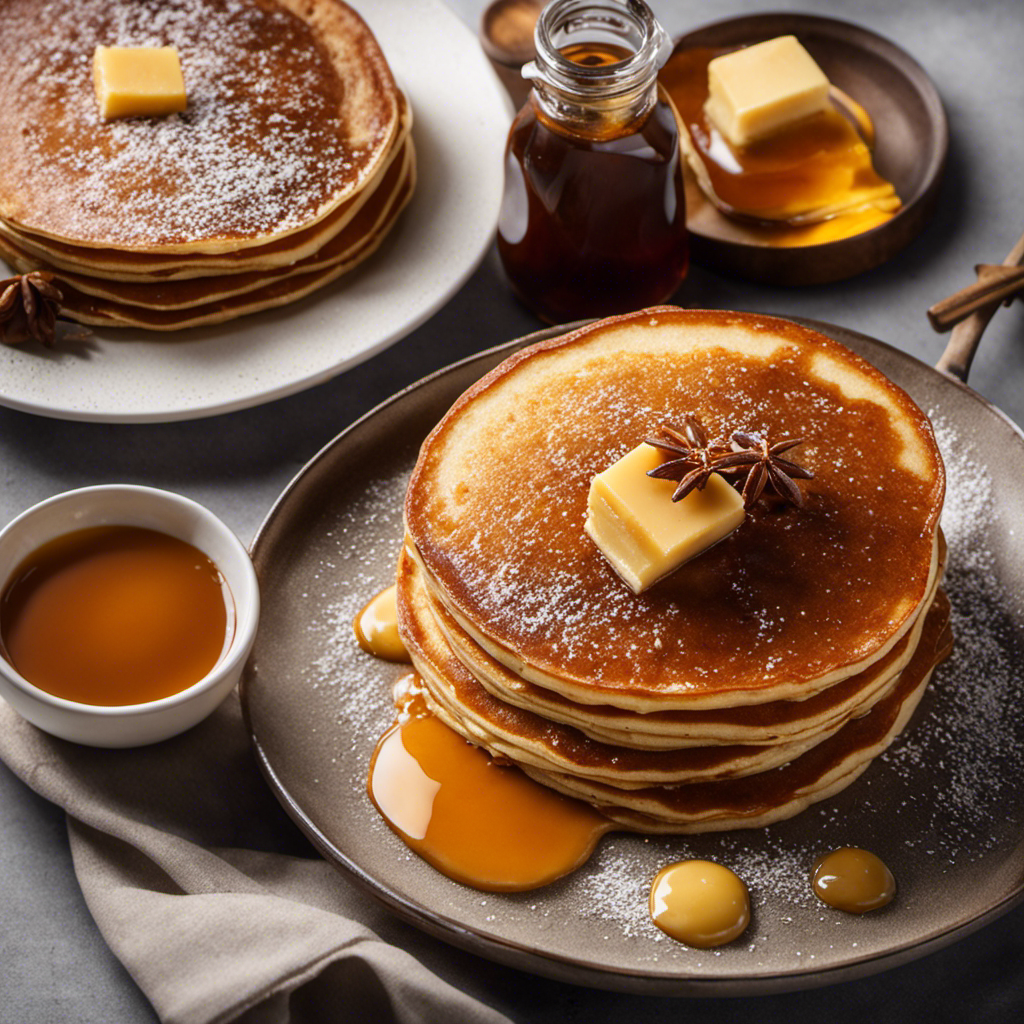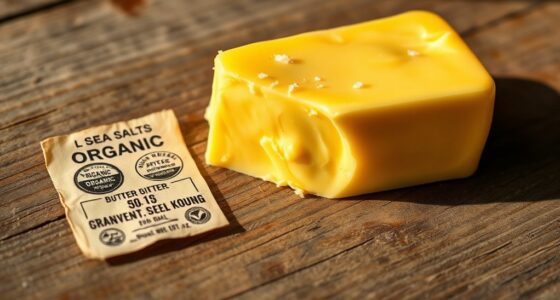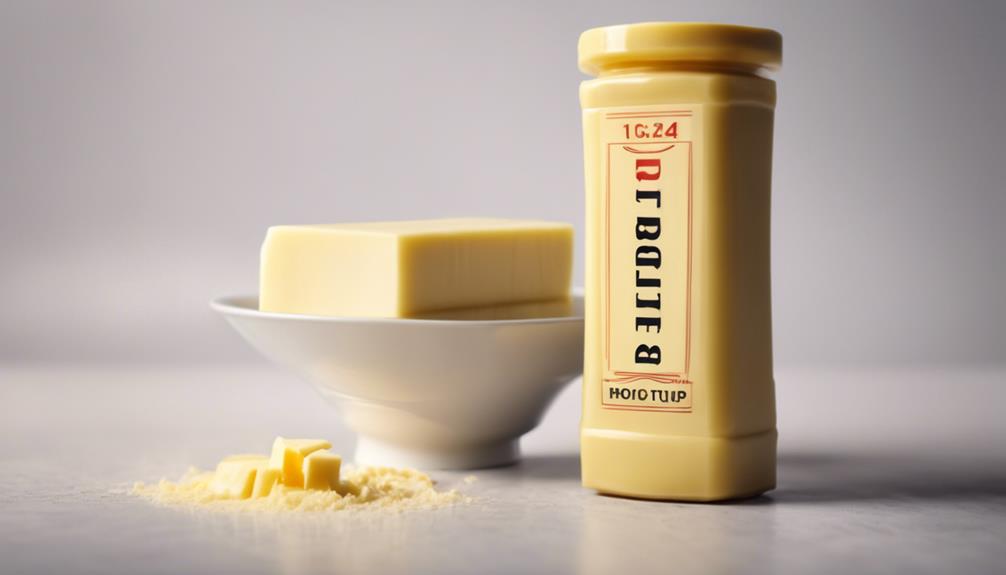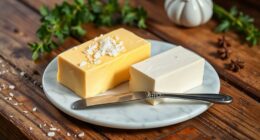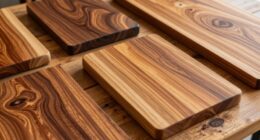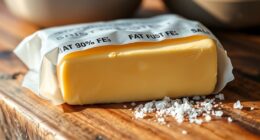Get ready for a special treat – I have something exciting to share with you! Get ready to dive into the world of duck butter.
Now, before you start picturing some kind of creamy spread made from actual ducks, let me set the record straight. Duck butter is not what you might think. It’s a term that’s been floating around for a while, carrying a certain cultural significance.
In this article, we’ll explore the origins, how it’s made, and the surprising health benefits of this intriguing substance.
Get ready to be amazed!
Key Takeaways
- Duck butter is the buildup of sweat and oil in the groin area causing discomfort and odor.
- The term originated in African American communities and carries cultural significance.
- Duck butter symbolizes intimacy and sexual tension in popular culture.
- Proper hygiene practices can address the discomfort and odor associated with duck butter.
Definition of Duck Butter
Duck butter is a term used to describe the buildup of sweat and oil in your groin area that can cause discomfort and odor. The origins of this term are unclear, but it is believed to have originated in African American communities. While there is limited documentation on the exact cultural significance of duck butter, it is often used in colloquial language as a humorous or slang term.
It is important to note that the term itself may be considered vulgar or offensive to some individuals, so it is advisable to use it with caution. Despite its origins and cultural significance, the discomfort and odor associated with duck butter can be addressed through proper hygiene practices, such as regular bathing and the use of talcum powder or antiperspirants in the groin area.
Origins and Cultural Significance of Duck Butter
The origins and cultural significance of this unique substance can be traced back to various ancient civilizations.
Duck butter, a term that has gained popularity in recent years, has its roots in the Middle Ages, when it was used as a term to describe the greasy residue that accumulates in the feathers of ducks.
Over time, the term evolved and took on a symbolic meaning, representing a mixture of sweat and bodily fluids.
In popular culture, duck butter has come to symbolize intimacy and sexual tension. It is often used as a metaphor in movies, music, and literature to depict the messy and complicated nature of human relationships.
The term has also found its way into slang, with people using it to describe a state of heightened sexual arousal.
How Is Duck Butter Made
To make it, all you need are two bodies, a warm environment, and a lot of friction. Duck butter, a term popularized in recent years, refers to the mixture of sweat, oils, and other bodily fluids that accumulate in the groin area. While the term may evoke disgust or confusion, it is important to understand that duck butter is a natural occurrence that happens to everyone. It is a result of the body’s natural processes and can vary in smell and consistency from person to person.
To make duck butter, there are no specific ingredients or variations. It is simply the combination of sweat and oils that accumulate in the groin area. The process is straightforward and can be summarized in a few steps:
- Engage in physical activity or spend a prolonged period in a warm environment.
- Allow the sweat to accumulate in the groin area.
- Generate friction through movement or sexual activity.
- The friction will cause the sweat and oils to mix, creating the characteristic scent and texture of duck butter.
While some may find the concept of duck butter off-putting, it is essential to remember that it is a natural occurrence and varies from person to person.
Common Uses of Duck Butter
If you’re looking for alternative uses, you might be surprised to learn that duck butter can be utilized in certain skincare products. While it is commonly known for its use in cooking recipes, duck butter has gained popularity in the beauty industry for its potential benefits to the skin.
Here are some common uses of duck butter in skincare:
-
Moisturizer: Duck butter’s rich and creamy texture makes it an excellent natural moisturizer, providing hydration and nourishment to the skin.
-
Lip balm: Due to its emollient properties, duck butter can be used as a lip balm to soothe and soften dry, chapped lips.
-
Body lotion: Duck butter can be incorporated into body lotions to help improve skin elasticity and promote a smoother, softer texture.
-
Hair conditioner: Its moisturizing properties also make duck butter a great ingredient for homemade hair conditioners, leaving hair shiny and manageable.
-
Massage oil: When applied topically, duck butter can be used as a massage oil to relax muscles and provide a soothing experience.
With its versatility and potential benefits, duck butter has found its way into various skincare products, offering an alternative and natural approach to beauty and self-care routines.
Health Benefits of Duck Butter
Looking to improve your health? Incorporating duck butter into your diet can provide numerous benefits for your overall well-being. Duck butter is not only delicious but also packed with essential nutrients that can support your body’s functions. Let’s take a closer look at the nutritional composition and potential therapeutic properties of duck butter.
| Nutritional Composition | Potential Therapeutic Properties |
|---|---|
| High in Omega-3 fatty acids | Anti-inflammatory properties |
| Good source of Vitamin B12 | Supports brain function |
| Contains Iron and Zinc | Boosts immune system |
| Rich in Selenium | Promotes thyroid health |
| Provides Vitamins A and E | Protects against oxidative stress |
With its high levels of Omega-3 fatty acids, duck butter can help reduce inflammation in the body, potentially benefiting those with chronic conditions like arthritis. Additionally, its Vitamin B12 content supports brain health and cognitive function. The Iron and Zinc in duck butter strengthen the immune system, while Selenium promotes a healthy thyroid. Lastly, Vitamins A and E act as antioxidants, protecting cells from damage caused by free radicals. Incorporate duck butter into your diet to enjoy these potential health benefits.
Frequently Asked Questions
Can Duck Butter Be Used as a Substitute for Regular Butter in Cooking and Baking?
Duck butter cannot be used as a substitute for regular butter in cooking and baking. Its flavor profile differs significantly, and its nutritional value is not necessarily healthier in terms of fats and calories.
Are There Any Specific Precautions or Storage Requirements for Duck Butter?
During storage, it is important to take certain precautions with duck butter. It is recommended to store it in a cool, dry place away from direct sunlight. This will help maintain its freshness and prevent spoilage.
Are There Any Known Allergies or Potential Adverse Reactions to Duck Butter?
I’m not an expert, but potential allergic reactions to duck butter could be rare. However, it’s always important to consult with a healthcare professional if you have any concerns. As for its benefits and uses, duck butter is often used in skincare and as a lubricant.
Can Duck Butter Be Made at Home Using Common Kitchen Ingredients?
Making homemade duck butter is a simple process. Start by combining softened butter, duck fat, and your choice of herbs and seasonings. Whip until smooth and refrigerate. Experiment with different flavors for the best results.
Are There Any Alternative Names or Terms Used for Duck Butter in Different Cultures or Regions?
Well, I gotta say, the alternative names for duck butter in different cultures or regions can really vary. It’s fascinating to see the cultural significance attached to this unique substance.
Conclusion
In conclusion, duck butter is a unique and culturally significant substance that has been used for centuries. Its origins can be traced back to ancient civilizations, where it was valued for its versatility and health benefits.
Today, it is still widely used in various culinary dishes and skincare products. The process of making duck butter is intricate and requires skill and precision.
Despite its unusual name, duck butter holds a special place in history and continues to be appreciated for its many uses and benefits.
